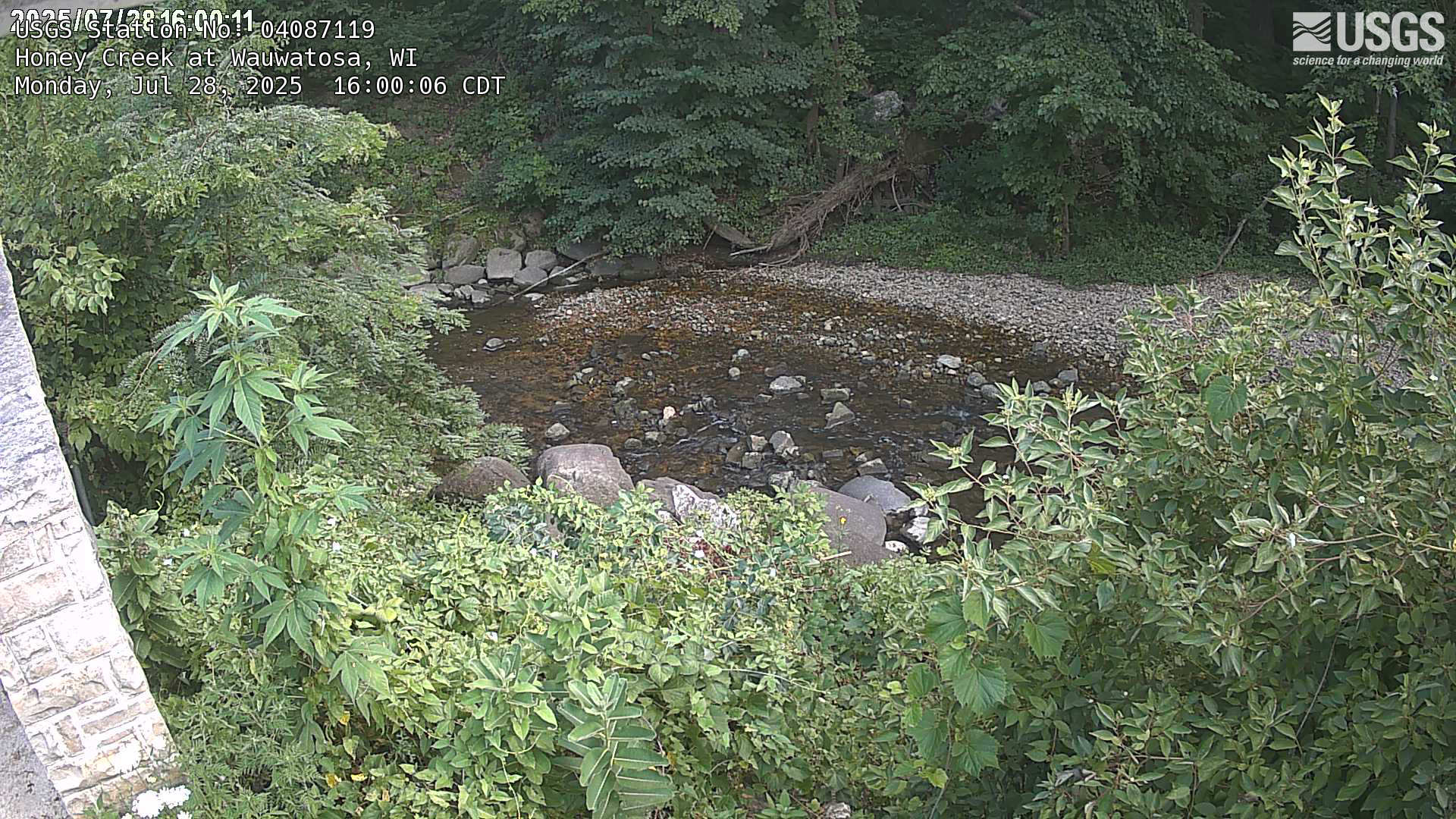Webcam for fish observation at streamgage 11111111, Kinnickinnic River at 16th Street at Milwaukee, WI: https://waterdata.usgs.gov/monitoring-location/11111111/
David W Owens
David Owens is a Supervisory Hydrologist with the Upper Midwest Water Science Center.
AREAS OF EXPERTISE
- Design and installation of monitoring equipment (sensors and dataloggers) for water quality and air monitoring stations
- Computer configuration and imaging
- Cellular modem communications using Verizon, Sprint and AT&T services
- Low cost real-time remote camera installations
- CR1000 programming and training
CURRENT PROJECTS
- Pioneer Farm
- Computer support team
- Edge of Field Instrumentation
Education and Certifications
B.S. Civil Engineering, University of Wisconsin-Madison, 1990
Science and Products
Precipitation-runoff relations and water-quality characteristics at edge-of-field stations, Discovery Farms and Pioneer Farm, Wisconsin, 2003-8
Methods of Data Collection, Sample Processing, and Data Analysis for Edge-of-Field, Streamgaging, Subsurface-Tile, and Meteorological Stations at Discovery Farms and Pioneer Farm in Wisconsin, 2001-7
Evaluation of nonpoint-source contamination, Wisconsin: water year 1999
Soil erosion from two small construction sites, Dane County, Wisconsin
Basic Requirements for Collecting, Documenting, and Reporting Precipitation and Stormwater-Flow Measurements
Unit-area loads of suspended sediment, suspended solids and total phosphorus from small watersheds in Wisconsin
Evaluation of Nonpoint-Source Contamination, Wisconsin: Selected Topics for Water Year 1995
Evaluation of nonpoint-source contamination, Wisconsin: Land-use and Best-Management-Practices inventory, selected streamwater-quality data, urban-watershed quality assurance and quality control, constituent loads in rural streams, and snowmelt-runoff ana
Evaluation of nonpoint-source contamination, Wisconsin; selected streamwater-quality data, land-use and best-management practices inventory, and quality assurance and quality control, water year 1993
Sources of pollutants in Wisconsin stormwater
Evaluation of nonpoint-source contamination, Wisconsin: Selected data for 1992 water year
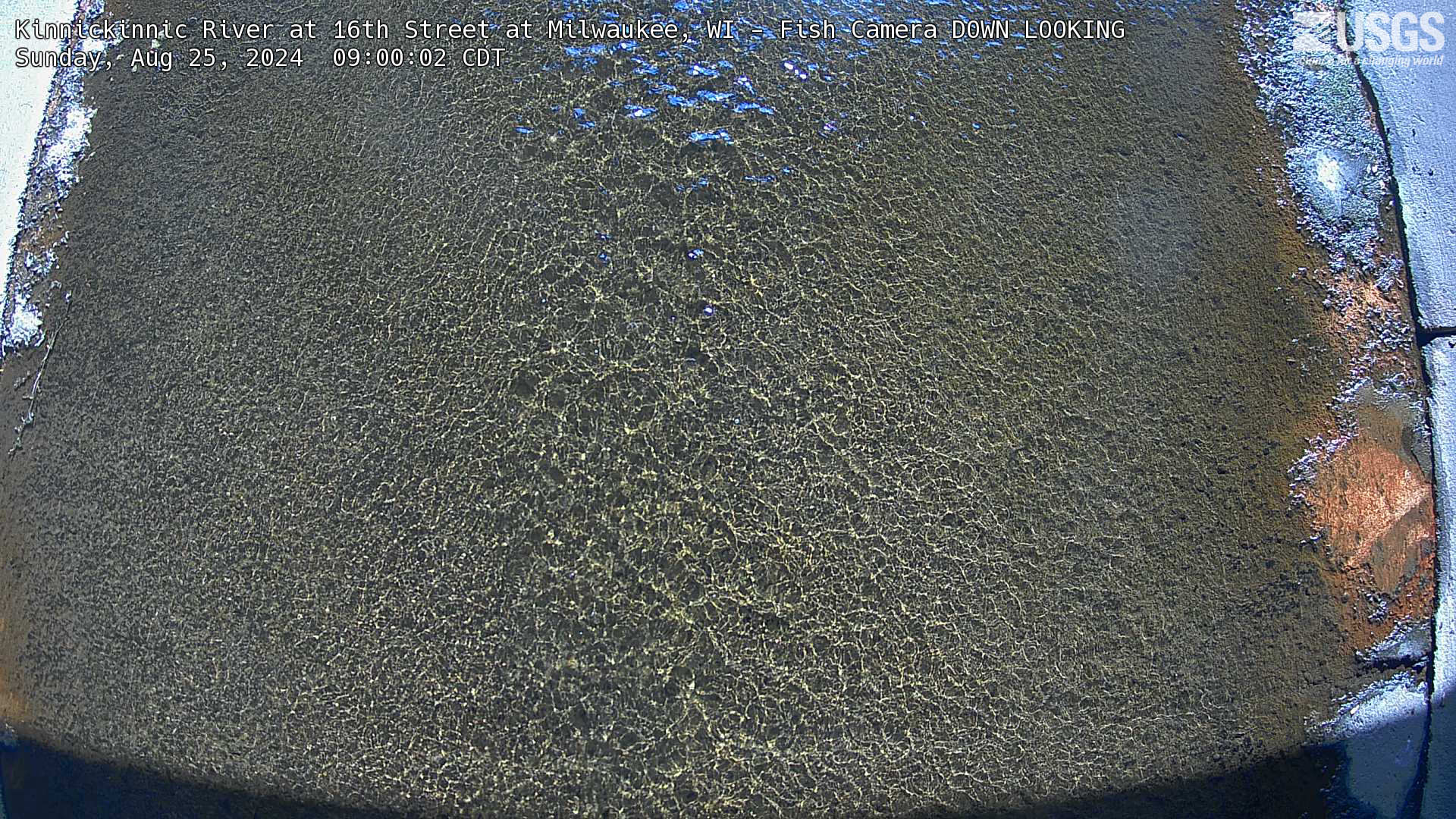
Webcam for fish observation at streamgage 11111111, Kinnickinnic River at 16th Street at Milwaukee, WI: https://waterdata.usgs.gov/monitoring-location/11111111/
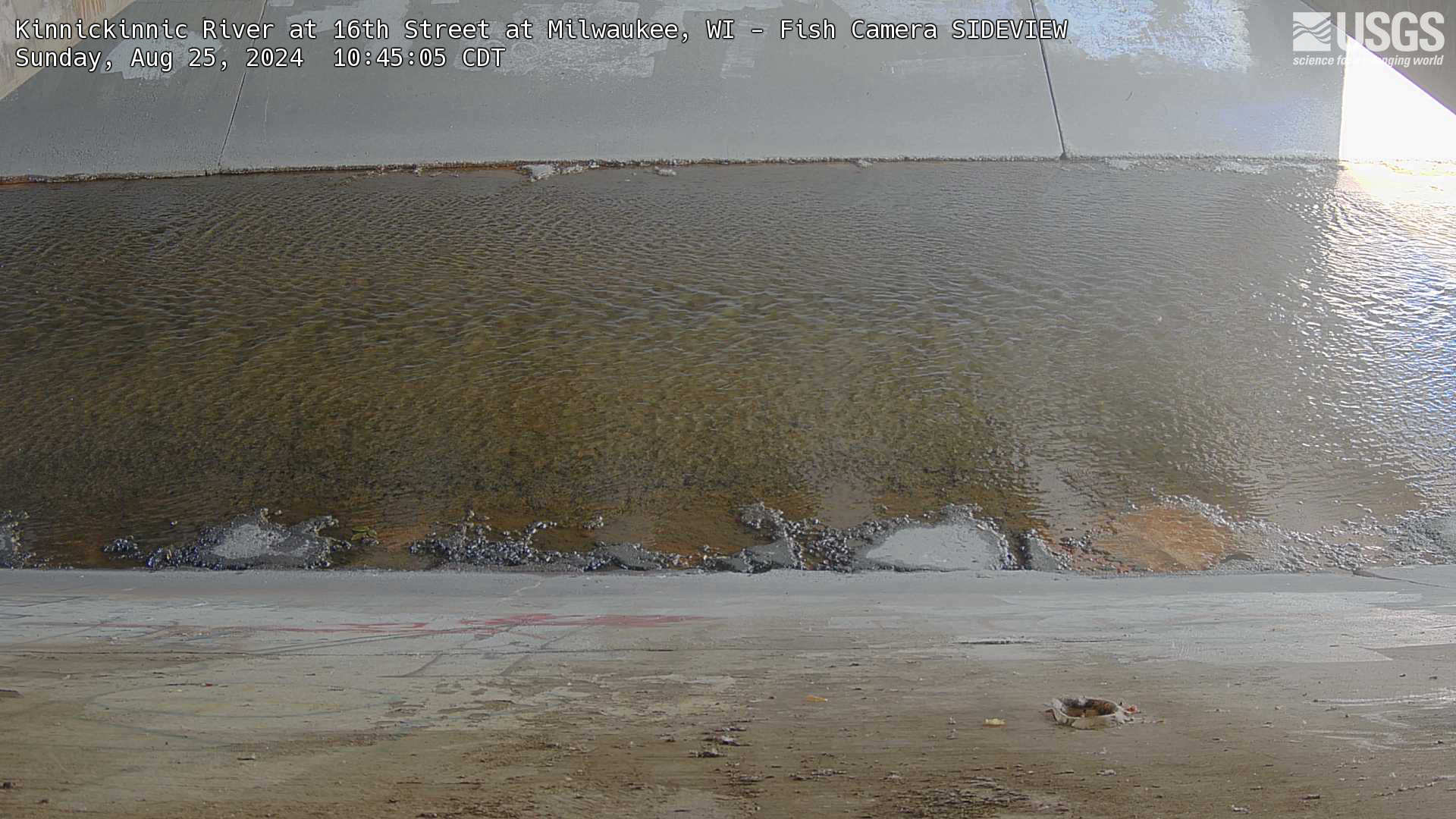
Webcam for fish observation at streamgage 11111111, Kinnickinnic River at 16th Street at Milwaukee, WI: https://waterdata.usgs.gov/monitoring-location/11111111/
Webcam for fish observation at streamgage 11111111, Kinnickinnic River at 16th Street at Milwaukee, WI: https://waterdata.usgs.gov/monitoring-location/11111111/
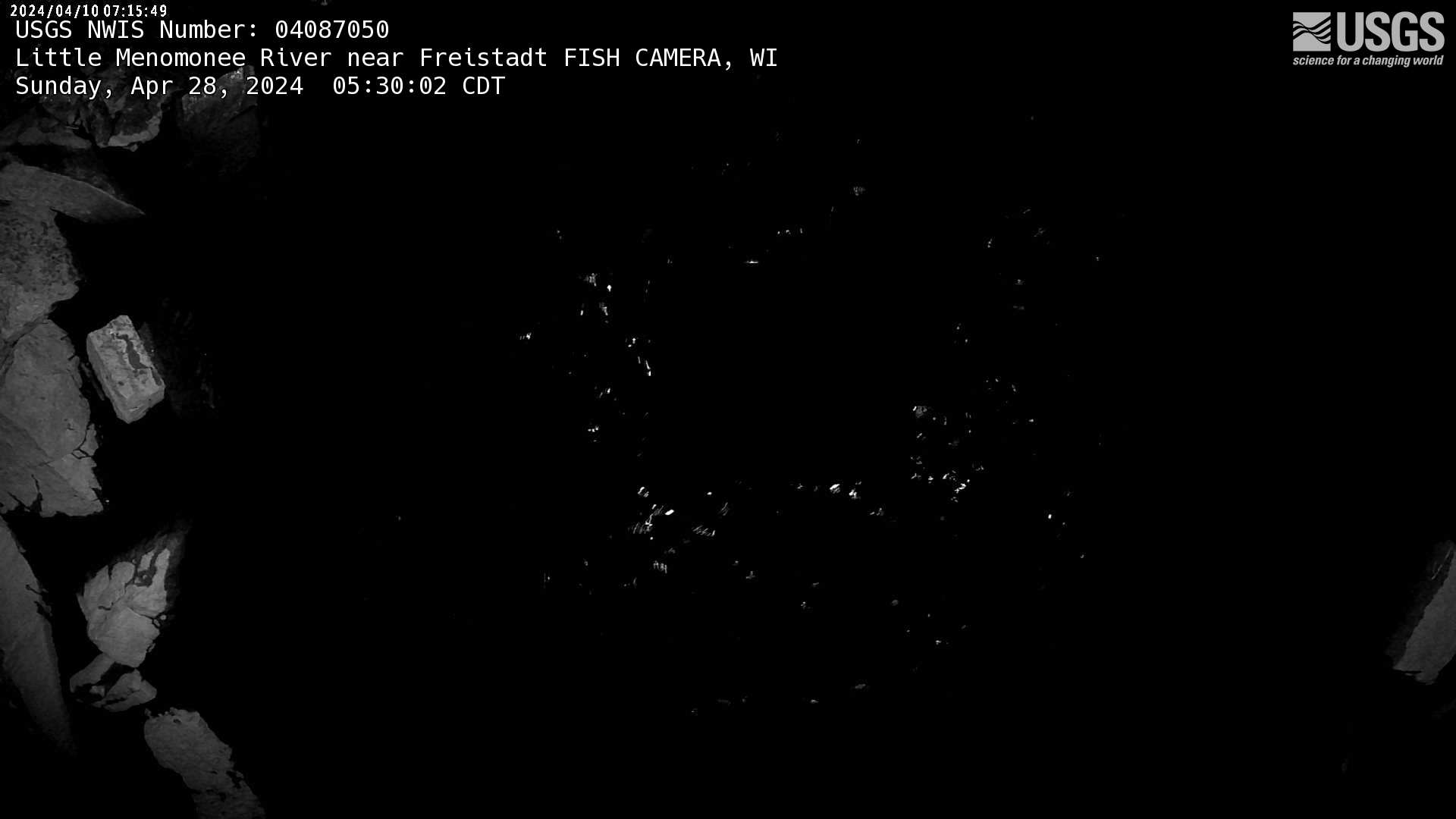
Webcam for fish observation at streamgage 04087050, Little Menomonee River near Freistadt, Wisconsin: https://waterdata.usgs.gov/monitoring-location/04087050/
Webcam for fish observation at streamgage 04087050, Little Menomonee River near Freistadt, Wisconsin: https://waterdata.usgs.gov/monitoring-location/04087050/
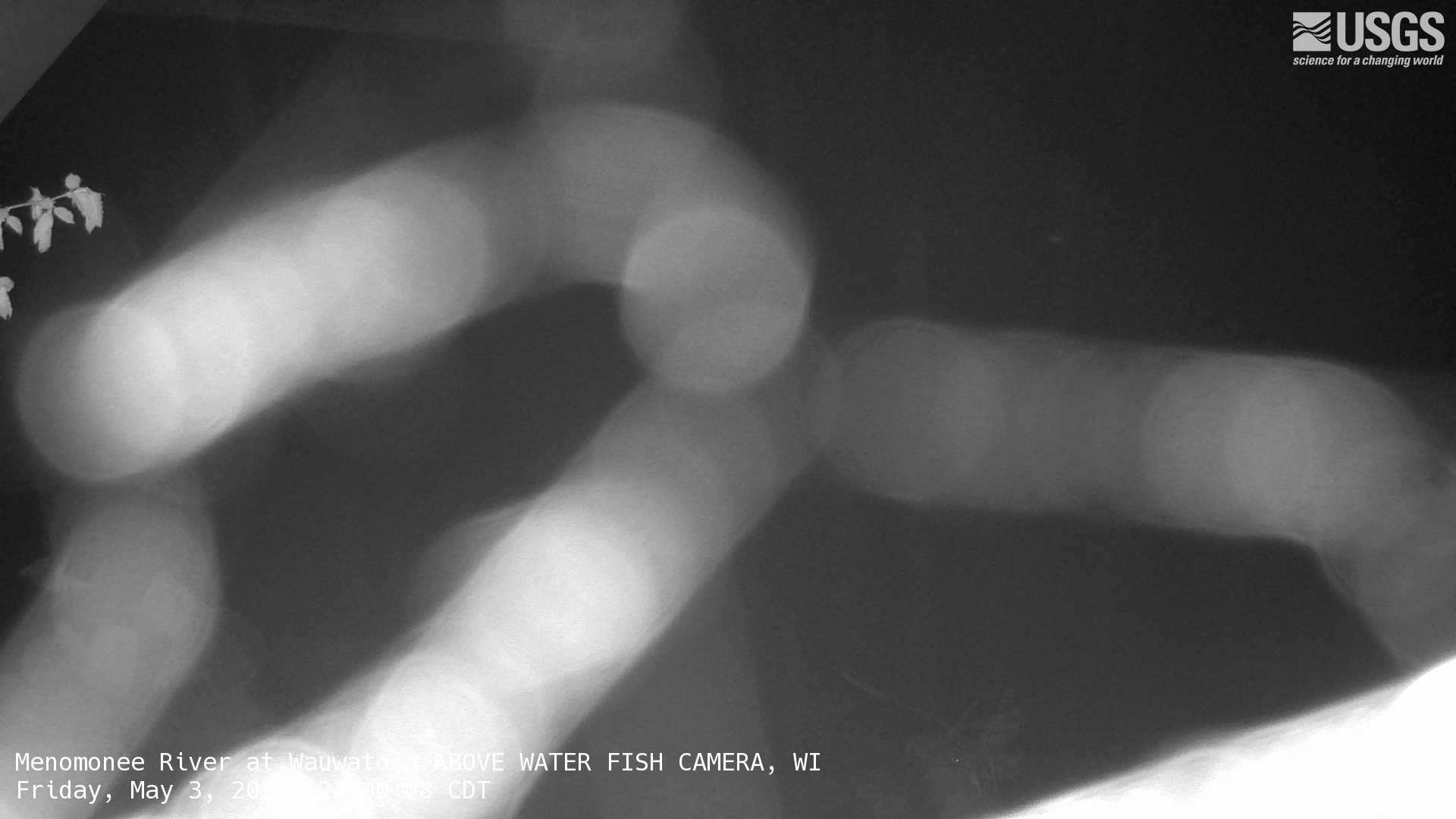
Webcam for fish observation at streamgage 04087120, Menomonee River at Wauwatosa, Wisconsin: https://waterdata.usgs.gov/monitoring-location/04087120/
Webcam for fish observation at streamgage 04087120, Menomonee River at Wauwatosa, Wisconsin: https://waterdata.usgs.gov/monitoring-location/04087120/
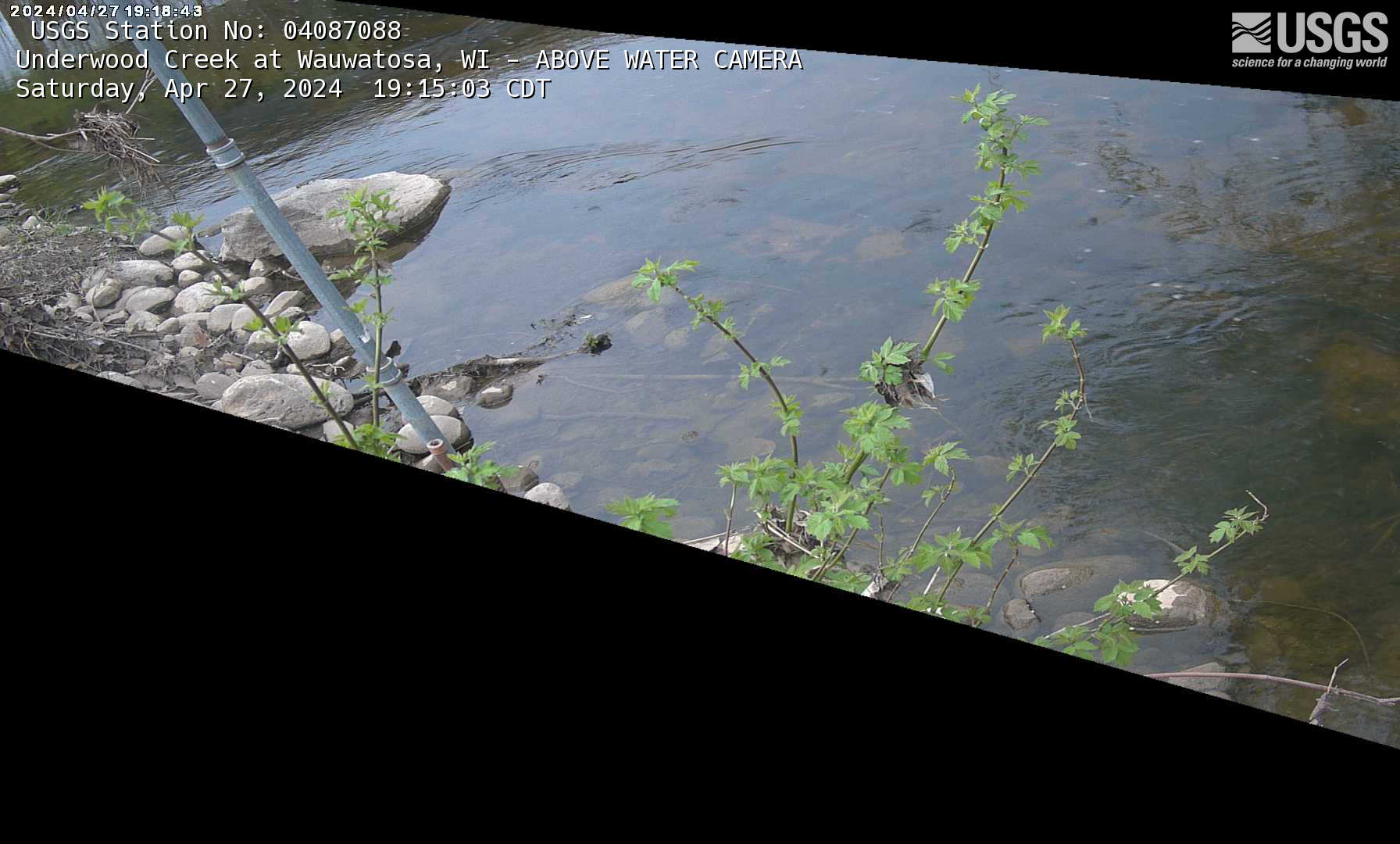
Webcam for fish observation at streamgage 04087088, Underwood Creek at Wauwatosa, Wisconsin: https://waterdata.usgs.gov/monitoring-location/04087088/
Webcam for fish observation at streamgage 04087088, Underwood Creek at Wauwatosa, Wisconsin: https://waterdata.usgs.gov/monitoring-location/04087088/
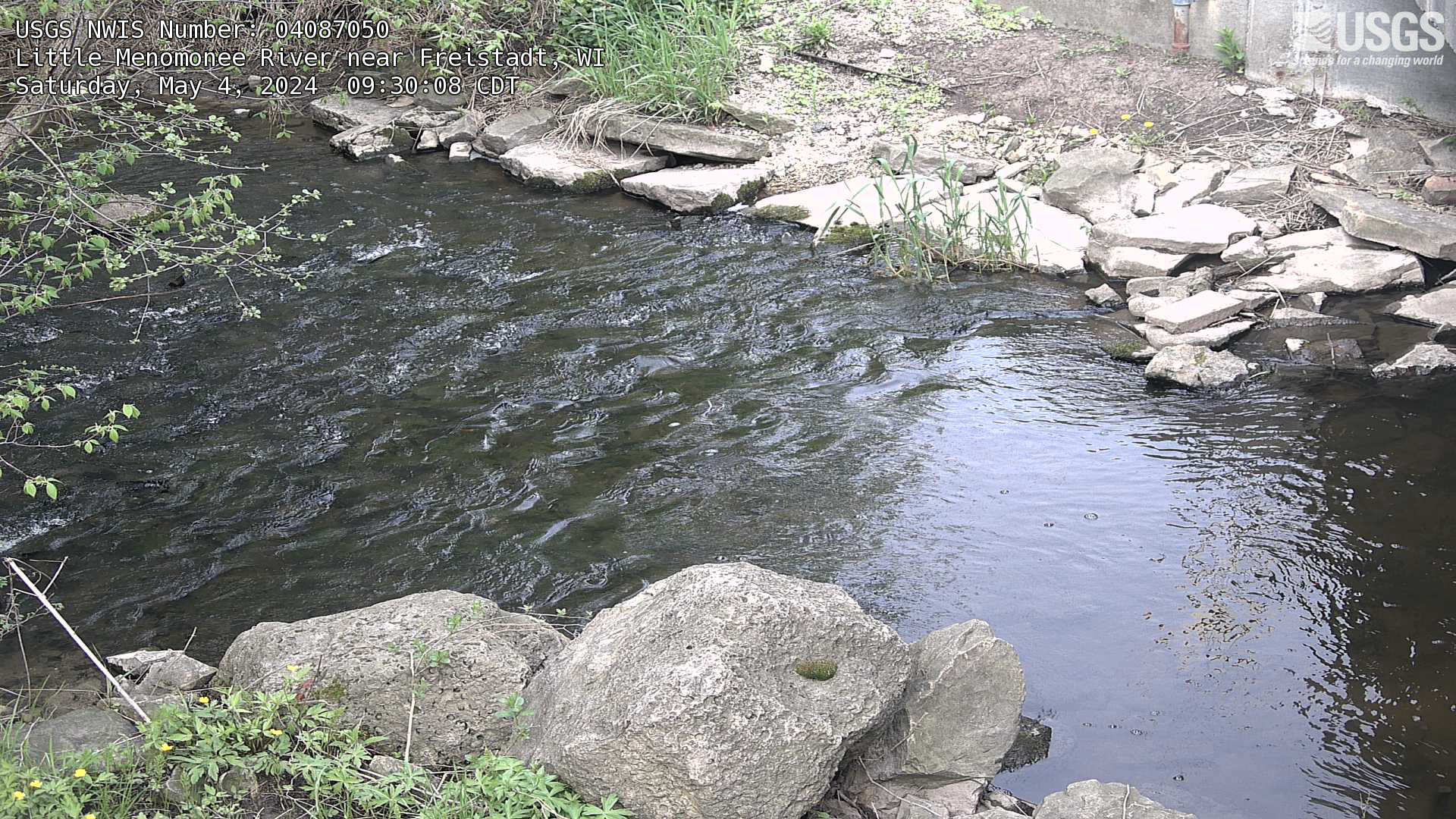
Webcam at streamgage at Little Menomonee River near Freistadt, Wisconsin. https://waterdata.usgs.gov/monitoring-location/04087050/
Webcam at streamgage at Little Menomonee River near Freistadt, Wisconsin. https://waterdata.usgs.gov/monitoring-location/04087050/
Webcam at streamgage at Honey Creek at Wauwatosa, Wisconsin. https://waterdata.usgs.gov/monitoring-location/04087119
Webcam at streamgage at Honey Creek at Wauwatosa, Wisconsin. https://waterdata.usgs.gov/monitoring-location/04087119
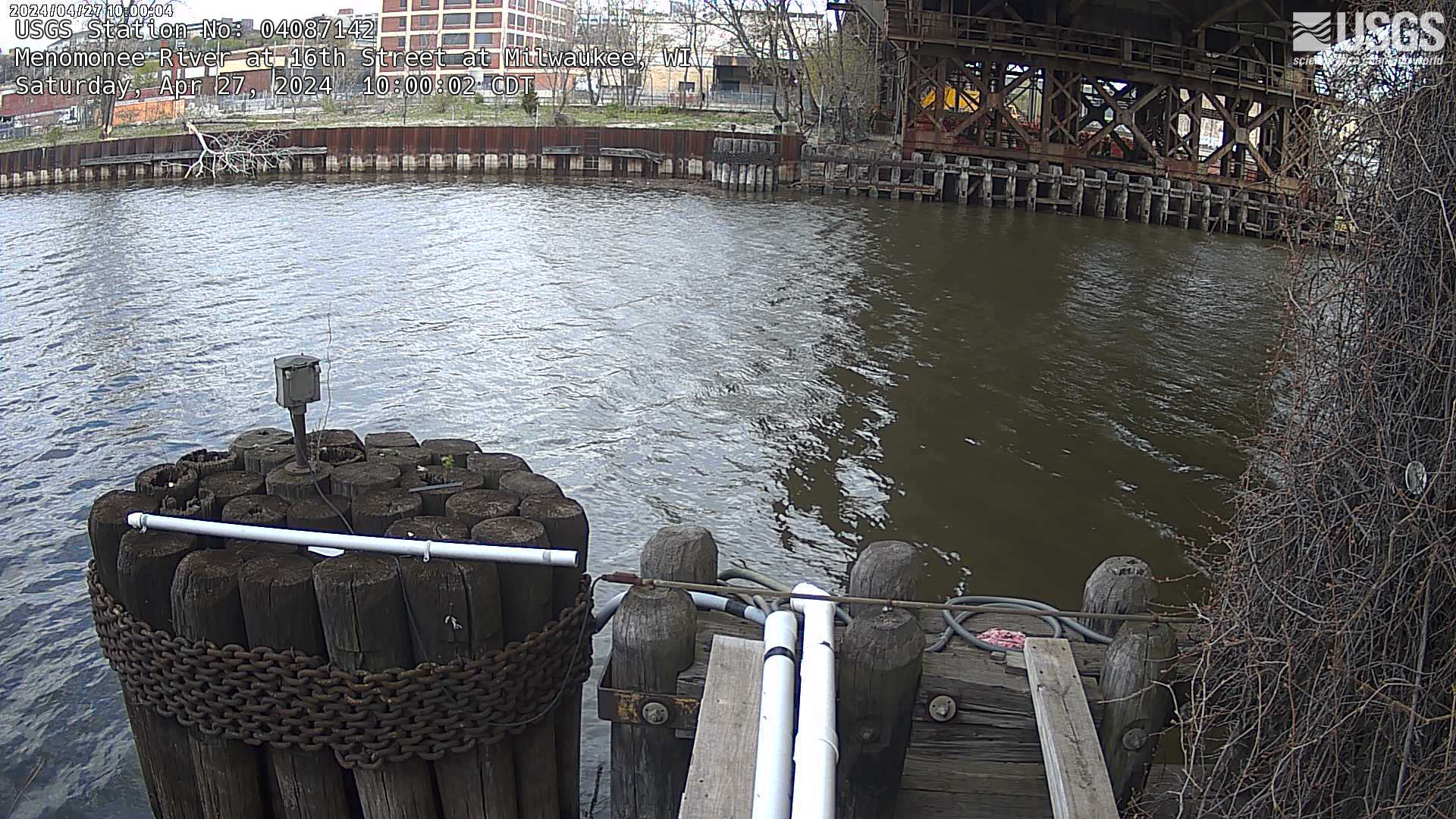
Webcam at streamgage at Menomonee River at 16th Street at Milwaukee, Wisconsin. https://waterdata.usgs.gov/monitoring-location/04087142
Webcam at streamgage at Menomonee River at 16th Street at Milwaukee, Wisconsin. https://waterdata.usgs.gov/monitoring-location/04087142

Webcam at streamgage at mouth of Milwaukee River (upstream) at Milwaukee, Wisconsin. https://waterdata.usgs.gov/monitoring-location/04087170/
Webcam at streamgage at mouth of Milwaukee River (upstream) at Milwaukee, Wisconsin. https://waterdata.usgs.gov/monitoring-location/04087170/
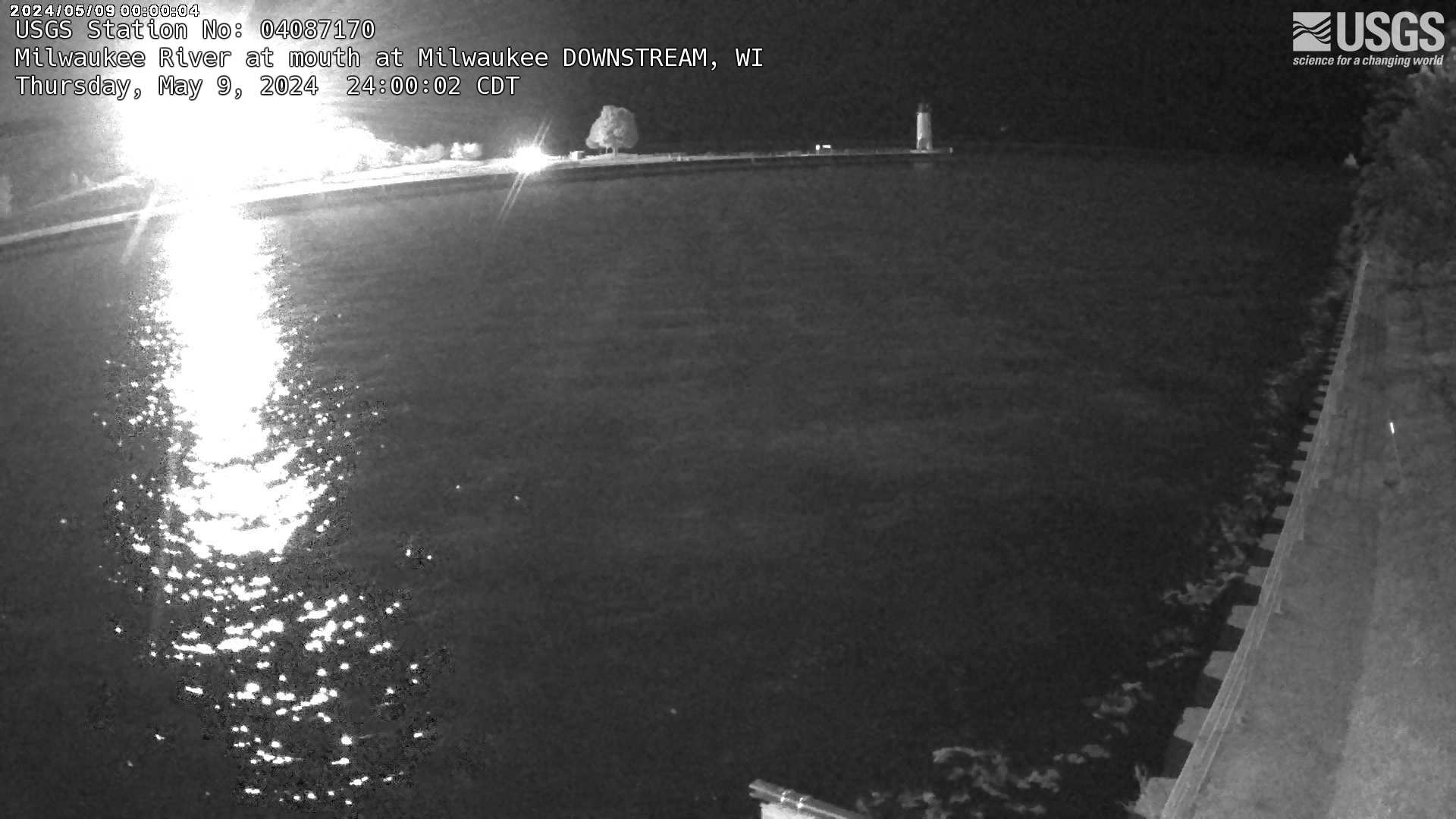
Webcam at streamgage at mouth of Milwaukee River (downstream) at Milwaukee, Wisconsin. https://waterdata.usgs.gov/monitoring-location/04087170/
Webcam at streamgage at mouth of Milwaukee River (downstream) at Milwaukee, Wisconsin. https://waterdata.usgs.gov/monitoring-location/04087170/
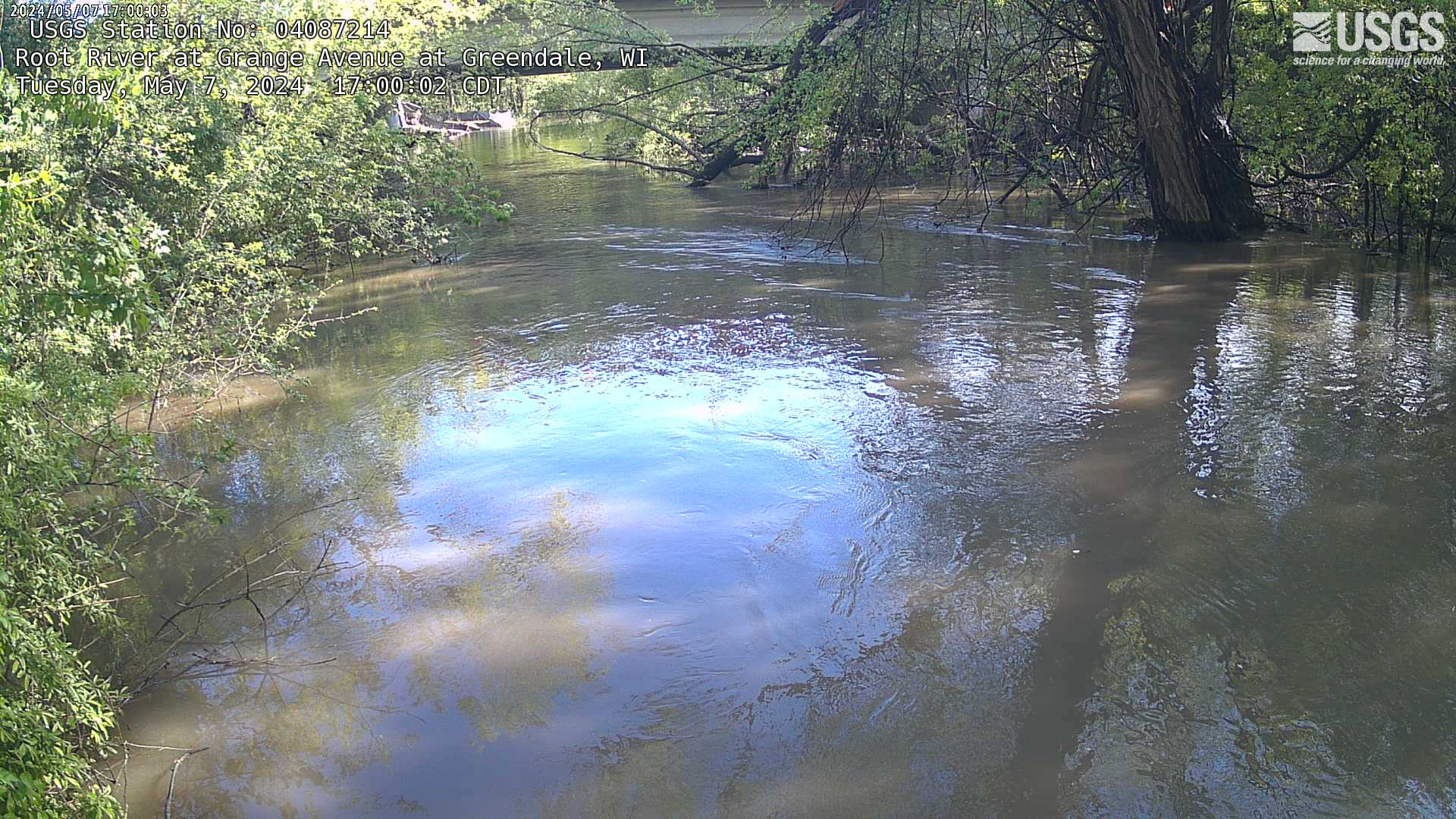
Webcam at streamgage at Root River at Grange at Greenfield, Wisconsin. https://waterdata.usgs.gov/monitoring-location/04087214
Webcam at streamgage at Root River at Grange at Greenfield, Wisconsin. https://waterdata.usgs.gov/monitoring-location/04087214
Science and Products
Precipitation-runoff relations and water-quality characteristics at edge-of-field stations, Discovery Farms and Pioneer Farm, Wisconsin, 2003-8
Methods of Data Collection, Sample Processing, and Data Analysis for Edge-of-Field, Streamgaging, Subsurface-Tile, and Meteorological Stations at Discovery Farms and Pioneer Farm in Wisconsin, 2001-7
Evaluation of nonpoint-source contamination, Wisconsin: water year 1999
Soil erosion from two small construction sites, Dane County, Wisconsin
Basic Requirements for Collecting, Documenting, and Reporting Precipitation and Stormwater-Flow Measurements
Unit-area loads of suspended sediment, suspended solids and total phosphorus from small watersheds in Wisconsin
Evaluation of Nonpoint-Source Contamination, Wisconsin: Selected Topics for Water Year 1995
Evaluation of nonpoint-source contamination, Wisconsin: Land-use and Best-Management-Practices inventory, selected streamwater-quality data, urban-watershed quality assurance and quality control, constituent loads in rural streams, and snowmelt-runoff ana
Evaluation of nonpoint-source contamination, Wisconsin; selected streamwater-quality data, land-use and best-management practices inventory, and quality assurance and quality control, water year 1993
Sources of pollutants in Wisconsin stormwater
Evaluation of nonpoint-source contamination, Wisconsin: Selected data for 1992 water year

Webcam for fish observation at streamgage 11111111, Kinnickinnic River at 16th Street at Milwaukee, WI: https://waterdata.usgs.gov/monitoring-location/11111111/
Webcam for fish observation at streamgage 11111111, Kinnickinnic River at 16th Street at Milwaukee, WI: https://waterdata.usgs.gov/monitoring-location/11111111/

Webcam for fish observation at streamgage 11111111, Kinnickinnic River at 16th Street at Milwaukee, WI: https://waterdata.usgs.gov/monitoring-location/11111111/
Webcam for fish observation at streamgage 11111111, Kinnickinnic River at 16th Street at Milwaukee, WI: https://waterdata.usgs.gov/monitoring-location/11111111/

Webcam for fish observation at streamgage 04087050, Little Menomonee River near Freistadt, Wisconsin: https://waterdata.usgs.gov/monitoring-location/04087050/
Webcam for fish observation at streamgage 04087050, Little Menomonee River near Freistadt, Wisconsin: https://waterdata.usgs.gov/monitoring-location/04087050/

Webcam for fish observation at streamgage 04087120, Menomonee River at Wauwatosa, Wisconsin: https://waterdata.usgs.gov/monitoring-location/04087120/
Webcam for fish observation at streamgage 04087120, Menomonee River at Wauwatosa, Wisconsin: https://waterdata.usgs.gov/monitoring-location/04087120/

Webcam for fish observation at streamgage 04087088, Underwood Creek at Wauwatosa, Wisconsin: https://waterdata.usgs.gov/monitoring-location/04087088/
Webcam for fish observation at streamgage 04087088, Underwood Creek at Wauwatosa, Wisconsin: https://waterdata.usgs.gov/monitoring-location/04087088/

Webcam at streamgage at Little Menomonee River near Freistadt, Wisconsin. https://waterdata.usgs.gov/monitoring-location/04087050/
Webcam at streamgage at Little Menomonee River near Freistadt, Wisconsin. https://waterdata.usgs.gov/monitoring-location/04087050/
Webcam at streamgage at Honey Creek at Wauwatosa, Wisconsin. https://waterdata.usgs.gov/monitoring-location/04087119
Webcam at streamgage at Honey Creek at Wauwatosa, Wisconsin. https://waterdata.usgs.gov/monitoring-location/04087119

Webcam at streamgage at Menomonee River at 16th Street at Milwaukee, Wisconsin. https://waterdata.usgs.gov/monitoring-location/04087142
Webcam at streamgage at Menomonee River at 16th Street at Milwaukee, Wisconsin. https://waterdata.usgs.gov/monitoring-location/04087142

Webcam at streamgage at mouth of Milwaukee River (upstream) at Milwaukee, Wisconsin. https://waterdata.usgs.gov/monitoring-location/04087170/
Webcam at streamgage at mouth of Milwaukee River (upstream) at Milwaukee, Wisconsin. https://waterdata.usgs.gov/monitoring-location/04087170/

Webcam at streamgage at mouth of Milwaukee River (downstream) at Milwaukee, Wisconsin. https://waterdata.usgs.gov/monitoring-location/04087170/
Webcam at streamgage at mouth of Milwaukee River (downstream) at Milwaukee, Wisconsin. https://waterdata.usgs.gov/monitoring-location/04087170/

Webcam at streamgage at Root River at Grange at Greenfield, Wisconsin. https://waterdata.usgs.gov/monitoring-location/04087214
Webcam at streamgage at Root River at Grange at Greenfield, Wisconsin. https://waterdata.usgs.gov/monitoring-location/04087214


